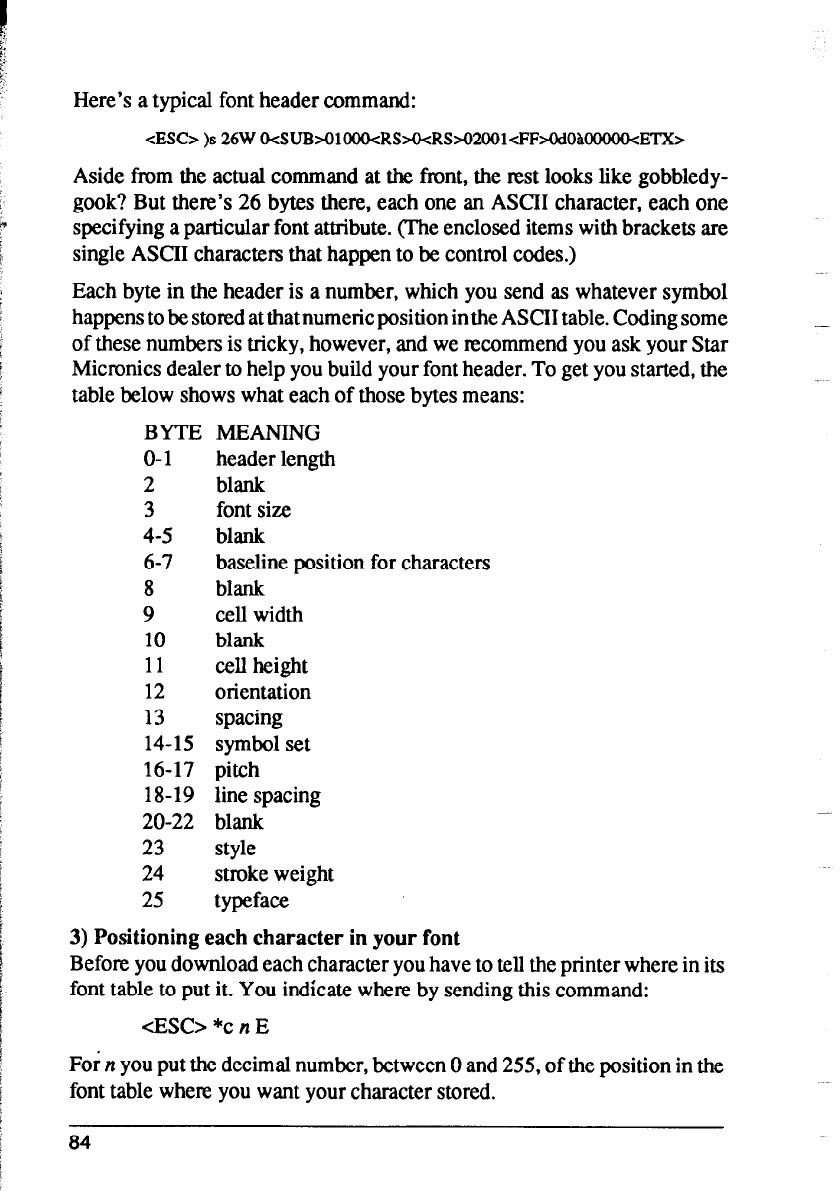
Here’s a typical font header command:
<ESC> )s 26W OcSUB>O1OOOcRS>O<RS>02OO1<FF>Od0MKHkETX>
Aside from the actual command at the front, the test looks like gobbledy-
gook? But there’s 26 bytes there, each one an ASCII character, each one
specifying a particular font attribute. (The enclosed items with brackets are
single ASCII characters that happen to be control codes.)
Each byte in the header is a number, which you send as whatever symbol
happens to be stored at that numeric position in the ASCII table. Coding some
of these numbers is tricky, however, and we recommend you ask your Star
Micronics dealer to help you build your font header. To get you started, the
table below shows what each of those bytes means:
BYTE MEANING
o-1
header length
2 blank
3
font size
4-5
blank
6-7
baseline position for characters
8
blank
9
cell width
10
blank
11
cell height
12 orientation
13
spacing
14-15 symbol set
16-17 pitch
18-19 line spacing
20-22 blank
23
style
24 stroke weight
25
typeface
3) Positioning each character in your font
Before you download each character you have to tell the printer where in its
font table to put it. You indicate where by sending this command:
<ESC> *c n E
Fo; n you put the decimal number, between 0 and 255, of the position in the
font table where you want your character stored.
84


















